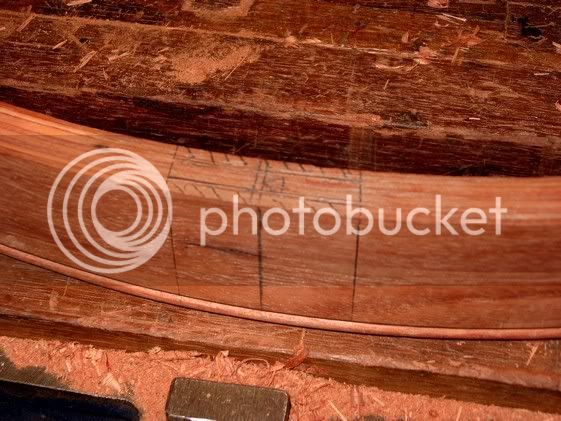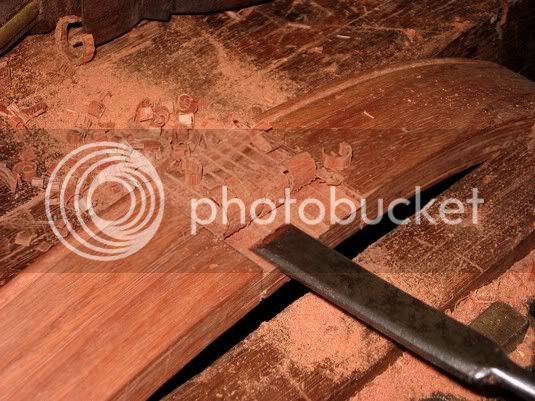labuzz
Established Member
Hi there,
A newbie question here!
how would you tackle something like this?

the width of the piece is 60mm.
the total thickness is 24mm...I must cut half wood ( 12mm). Sorry about the mistake in the drawing.
the goal is to get rid of the red part with chisels ( 35mm) and saws ( nothing else like planes, powertools...). What is the fastest/safest way to cut the main part of the waste ? What should be the best position of the piece ( start vertical then horizontal? )?This is an exercise.
I know how to mark the piece and finish the details ( paring ).
tky you and be precise!
A newbie question here!
how would you tackle something like this?

the width of the piece is 60mm.
the total thickness is 24mm...I must cut half wood ( 12mm). Sorry about the mistake in the drawing.
the goal is to get rid of the red part with chisels ( 35mm) and saws ( nothing else like planes, powertools...). What is the fastest/safest way to cut the main part of the waste ? What should be the best position of the piece ( start vertical then horizontal? )?This is an exercise.
I know how to mark the piece and finish the details ( paring ).
tky you and be precise!







